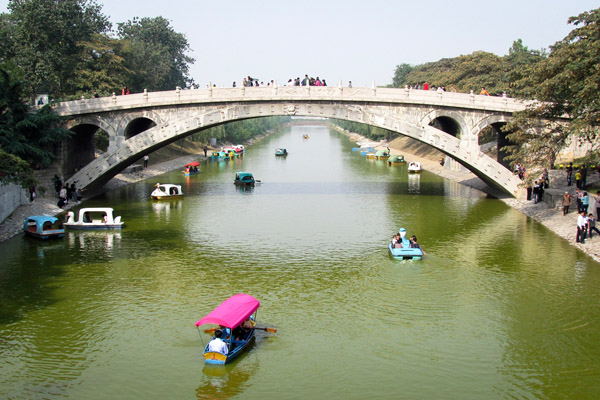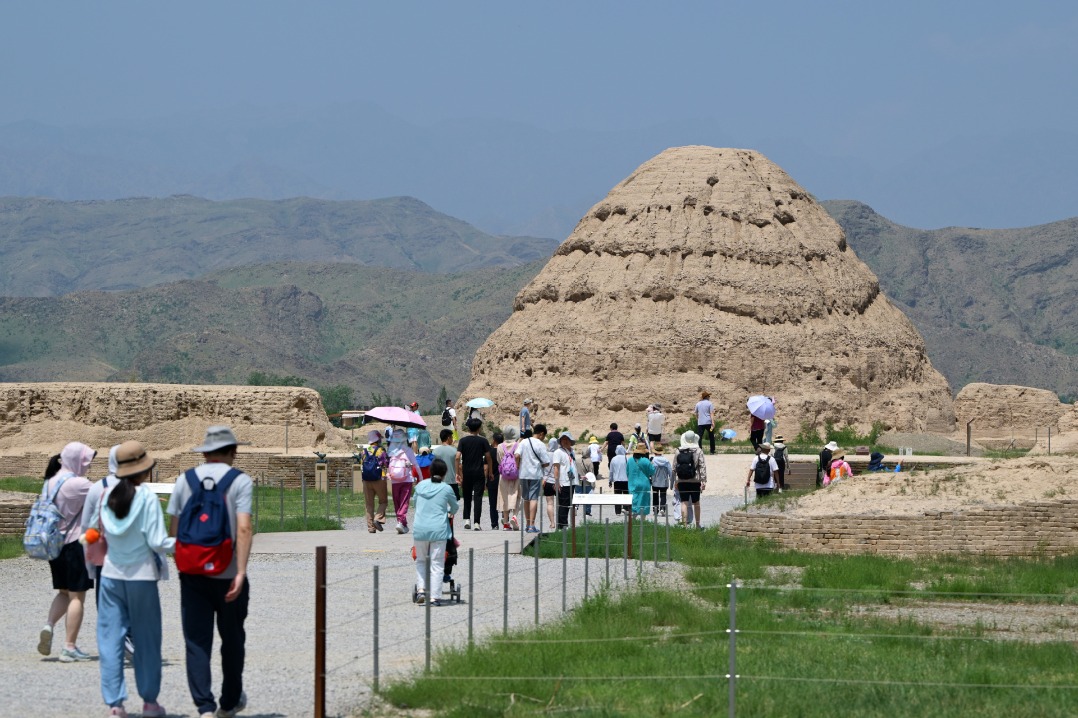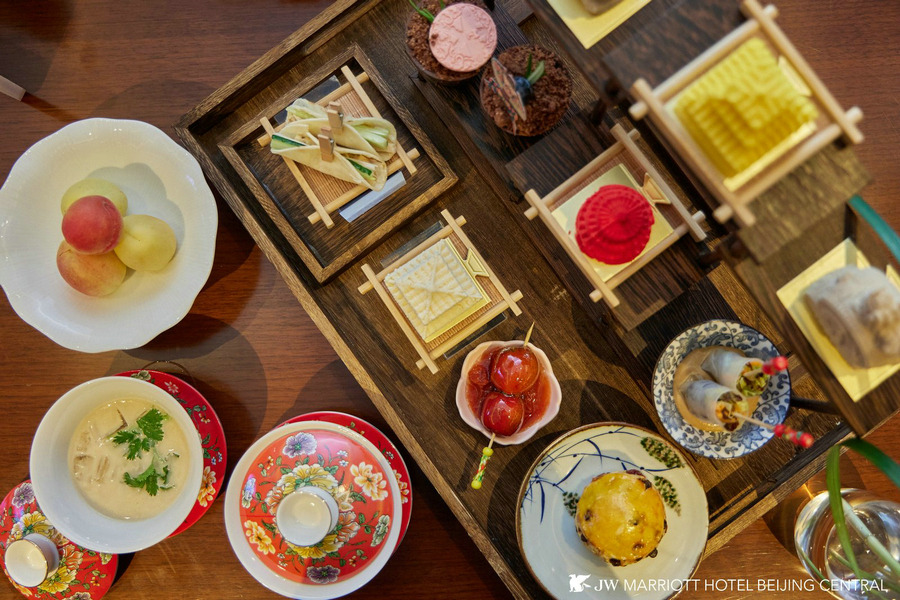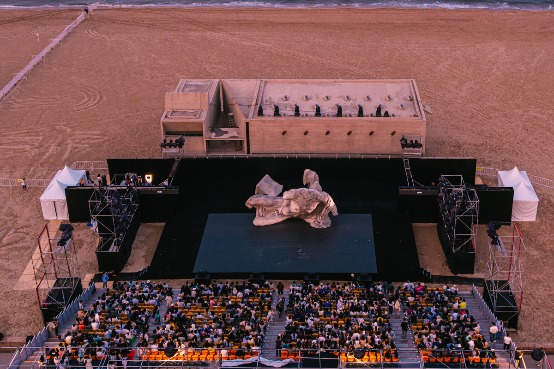Life beside ancient bridge


SHIJIAZHUANG - Li Zhengjie says people in his village were born "shouldered" with a nearby ancient bridge. In his eyes, the 1,400-year-old Zhaozhou Bridge they have been so proud of has become a reason for their falling behind China's urbanization drive.
"We can't find jobs in the neighborhood as there are no factories nearby. Property developers are not allowed to build apartments so as to preserve the bridge and landscape," says the 66-year-old.
Zhaozhou Bridge is in Zhaoxian County, North China's Hebei province, around 300 kilometers south of Beijing. Built in Sui Dynasty (581-618), it is the world's oldest single-arch bridge, with a span of 37 meters.
Local people call it "Dashiqiao", the great stone bridge. Li's hometown, Dashiqiao village, was named after the bridge.
Along with such world famous landmarks as the Forbidden City and the Great Wall, the bridge was listed into China's first group of national cultural heritage protection sites in 1961.
While China aims for xiaokang, a moderately prosperous society in an all-round way by 2020, people living near the ancient bridge are trying to balance protection of the structure with their pursuit of a better life.
Li Jinshuan, former head of Zhaoxian county's cultural heritage protection department, said that a combination of location, design and excellent construction are the main reasons the bridge has withstood earthquake, flood and war for 1,400 years.
The bridge is located in the lower reaches of an S-shaped section of the Xiaohe River, which helps slow the water, he says.
"The four spandrel arches not only saved 700 tonnes of stone, but also reduced the bridge's weight as well as pressure by allowing floodwater to flow through," he says.
Villager Li recalls that when he was young, they often caught fish in river and climbed onto the small arches of the bridge to cool themselves in summer.
"We didn't have air conditioners or television sets back then, so the bridge was a kind of paradise of fun for us," he says.
Known for its snowflake pears, Zhaoxian is a major agricultural county. In the 1960s, people elsewhere who could not make ends meet often came to the village to give story-telling performances, drawing big audiences, Li Zhengjie recalls.
"They told stories every day beside the great stone bridge, sometimes taking two months to tell the tales of a historical figure," he says.
Instead of money, local villagers just fed the storytellers.
Since the opening-up and reform policy in late 1970s, rural China has witnessed great change. Electric appliances are no longer luxuries and the stone bridge has lost its charm among villagers, but instead, has become a tourist resort.
"People may not know Zhaoxian county, but they know Zhaozhou Bridge," Li says with a smile.
With a park built by the local government, the bridge attracts nearly 1 million tourists every year, bringing plenty of money into the village.
According to the county government, tourism revenue in the county is around 100 million yuan ($15 million) every year, with the entrance fees for Zhaozhou Bridge exceeding 10 million yuan.
Yao Chunxi, from a rural area of Anyang, Henan province, joined a travel agency for a tour of Zhaoxian county with around 100 others.
"It's my first time here. Very exciting," he said, adding more and more farmers with enough income are becoming tourists, especially in the slack winter season.
Kang Jiping, 32, takes photographs for tourists in the park. Over the past seven years, she made up to 6,000 yuan each month. The number of villager photographers has doubled. "As the number of visitors is rising, the income is fairly good."
Kang is optimistic about her prospects as Xiong'an New Area, a national strategic plan announced in April 2017, also in Hebei province, is expected to bring more tourists to Zhaoxian.
"More and more people from other places are coming to see the bridge, and I'm sure we will make more money still," she said.

































